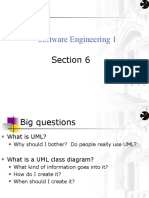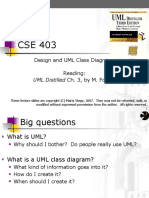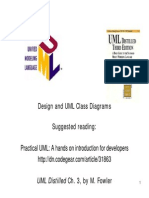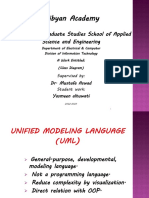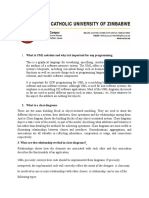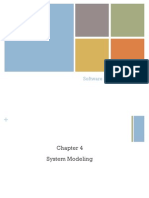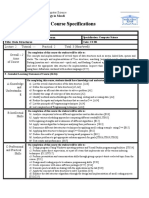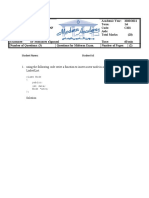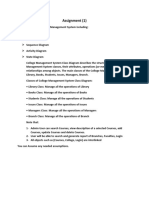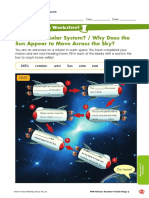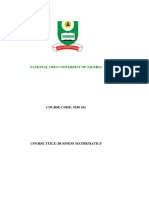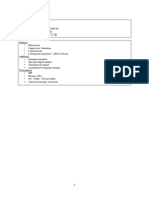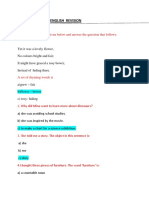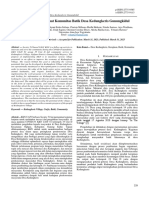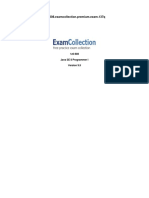0% found this document useful (0 votes)
96 views19 pagesDesign and UML Class Diagrams
The document discusses UML class diagrams, including what they are, how to create them, and examples. A UML class diagram visually shows the structure of classes in an object-oriented system, including class attributes and methods, and relationships between classes like generalization, association, aggregation and composition. Well-formed class diagrams properly depict class names, attributes, methods, visibility, multiplicity, relationships and more to effectively model the design of a software system.
Uploaded by
mohamed elgammlCopyright
© © All Rights Reserved
We take content rights seriously. If you suspect this is your content, claim it here.
Available Formats
Download as PDF, TXT or read online on Scribd
0% found this document useful (0 votes)
96 views19 pagesDesign and UML Class Diagrams
The document discusses UML class diagrams, including what they are, how to create them, and examples. A UML class diagram visually shows the structure of classes in an object-oriented system, including class attributes and methods, and relationships between classes like generalization, association, aggregation and composition. Well-formed class diagrams properly depict class names, attributes, methods, visibility, multiplicity, relationships and more to effectively model the design of a software system.
Uploaded by
mohamed elgammlCopyright
© © All Rights Reserved
We take content rights seriously. If you suspect this is your content, claim it here.
Available Formats
Download as PDF, TXT or read online on Scribd
/ 19
